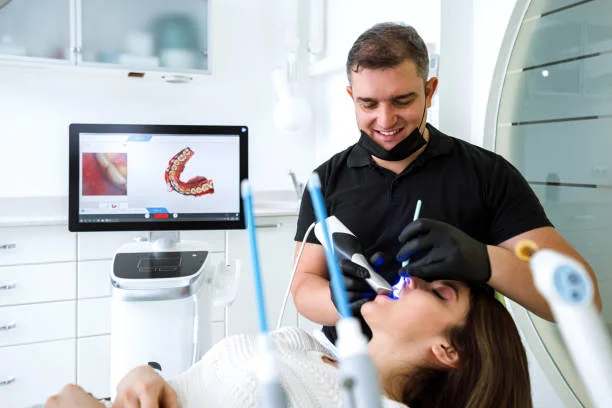The story of dentistry has always balanced on a delicate fulcrum: the hand of the artisan and the tools of the age. In the earliest days, dental restorations were sculpted with little more than skill, intuition, and patience. A dentist’s artistry determined the fate of a patient’s smile. But today, a new era of design has arrived, one where artisanship converges with algorithms, and dental implants are born not just from steady hands, but from digital precision guided by dental software.
This fusion of human creativity with computational intelligence is most visible in the rise of CAD/CAM technology—Computer-Aided Design and Computer-Aided Manufacturing. What began as an industrial revolution in aerospace and automotive engineering has found its way into the intimate architecture of the human mouth. And in this union, we glimpse a future where the artistry of a smile and the mathematics of algorithms coalesce into something previously unimaginable.
Thanks for reading—why not stick around and see what else is new?
The Digital Renaissance of Dental Implants
At its core, a dental implant is deceptively simple: a titanium post, surgically placed into the jawbone, serving as a foundation for a prosthetic tooth. Yet the biological, biomechanical, and aesthetic demands are anything but simple. Each patient’s anatomy is as unique as a fingerprint. The angle of the jaw, the density of bone, and the harmony with surrounding teeth make every implant case a small masterpiece of engineering and aesthetics.
In the past, achieving this harmony depended almost entirely on the manual expertise of the dentist and technician. Today, dental software enables a new kind of precision. Digital scanners capture the patient’s oral environment in astonishing detail, creating three-dimensional models that reflect not only the shape of the teeth but the very texture of the bone. These digital blueprints serve as the canvas upon which implants are designed.
CAD programs allow dentists and technicians to sculpt virtual crowns and abutments, testing their fit, bite, and esthetics without ever touching a bur or drill. CAM technologies then translate these digital visions into reality—milling or 3D-printing implant components with micron-level accuracy. What emerges is not a mass-produced solution, but a bespoke restoration shaped by both human judgment and algorithmic logic.
Where Artisan Meets Algorithm
One might assume that as dental software grows more advanced, the artisan’s role diminishes. Yet the truth is subtler. Algorithms calculate, simulate, and optimize, but they cannot fully perceive beauty, proportion, or the nuances of cultural aesthetics. That remains the realm of human judgment.
Consider the curve of a smile. Mathematics can dictate symmetry, but symmetry alone does not always equal attractiveness. The artisan—dentist or technician—still decides whether a slightly irregular incisor better suits the patient’s character, or whether a perfectly aligned set of dental implants risks looking unnatural. In this sense, the algorithm is not replacing the artisan; it is magnifying their ability to sculpt with precision, while freeing them from the mechanical limits of guesswork.
Thus, CAD/CAM futures should not be imagined as machines overtaking humans, but as a collaboration between art and science. The artisan frames the vision, while the algorithm sharpens it into reality.
Dental Software’s as Predictive Architects
Beyond mere design and fabrication, dental software is evolving into predictive tools. Machine learning systems analyze thousands of implant cases, identifying subtle risk factors invisible to the human eye. Bone density patterns, occlusal forces, or even the patient’s history of gum disease can now be integrated into implant planning.
Such predictive modeling does not just improve outcomes; it changes the philosophy of dentistry. Instead of reacting to complications after surgery, clinicians can foresee them before the first incision. This anticipatory power redefines responsibility: the dentist is no longer only a healer but a strategist working alongside software that continuously refines its intelligence with every case.
Democratization and Ethical Horizons
With 3D printing, chairside milling, and accessible CAD/CAM systems, dental implants are also moving toward democratization. What was once a luxury treatment, accessible only to a privileged few, is gradually shifting toward broader accessibility. Local clinics, equipped with digital scanners and software-driven milling units, can now fabricate high-quality restorations that previously required specialized laboratories.
Yet this democratization comes with ethical questions. If algorithms increasingly shape the design of implants, who bears responsibility for errors—the dentist, the software developer, or the machine itself? And as implant systems become more standardized, do we risk eroding the individuality of human smiles in pursuit of efficiency?
The Next Frontier: Living Implants
Perhaps the most imaginative horizon of CAD/CAM futures lies not just in design precision, but in integration with biotechnology. Researchers are exploring bioengineered implants—structures seeded with stem cells or coated with nanomaterials that encourage natural bone regeneration. Here, CAD/CAM design may serve as the bridge between biology and technology, crafting scaffolds that harmonize with living tissue rather than merely occupying its space.
Imagine a future where a patient receives a 3D-printed implant, designed with CAD precision, manufactured with CAM machinery, and infused with living cells that allow the implant to regenerate and adapt over time. In this scenario, the artisan’s vision, the algorithm’s calculation, and biology’s regenerative power converge into a new definition of a tooth—half machine, half organism.
Smiles at the Crossroads of Art and Code
The future of dental implants is not a contest between artistry and automation, but a dialogue. The artisan brings intuition, aesthetics, and empathy; the algorithm offers accuracy, prediction, and efficiency. Together, they are reshaping not only how teeth are replaced, but how dentistry itself is imagined.
As dental software’s evolve and CAD/CAM systems expand their reach, the smile becomes both a crafted artwork and a computational achievement. Each implant embodies the convergence of past and future: the hand-carved tradition of dental artistry meeting the data-driven logic of the digital age.
In that convergence, we see more than technology—we see the enduring truth that even in a world of algorithms, the human touch still defines the soul of a smile.
Stick around and explore more articles that might catch your interest!






